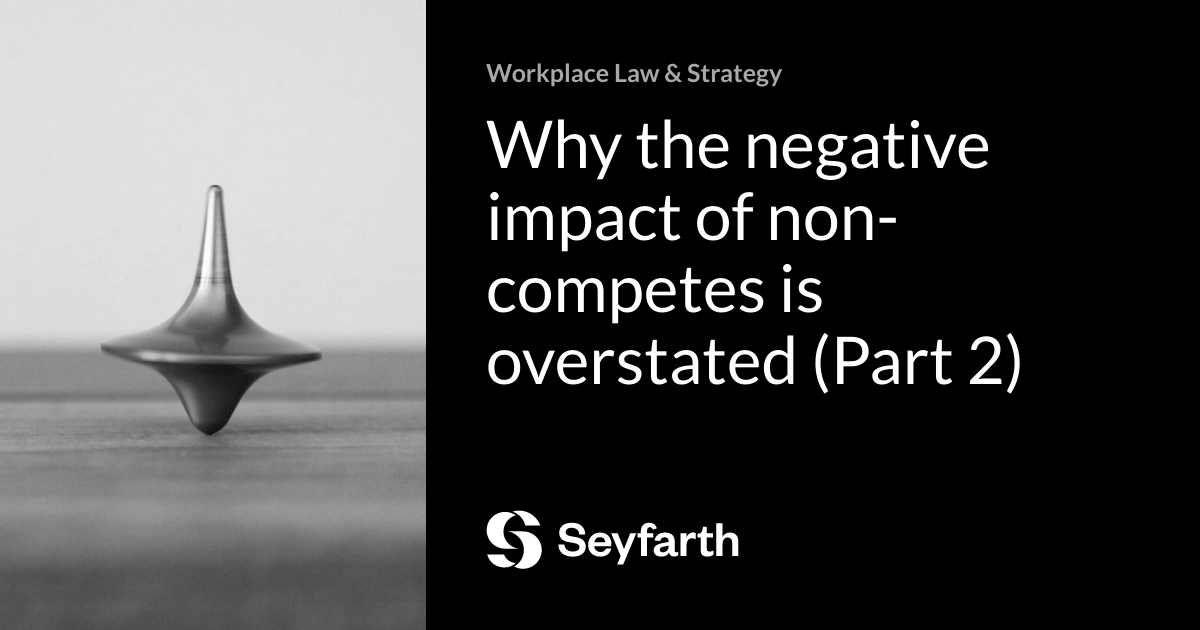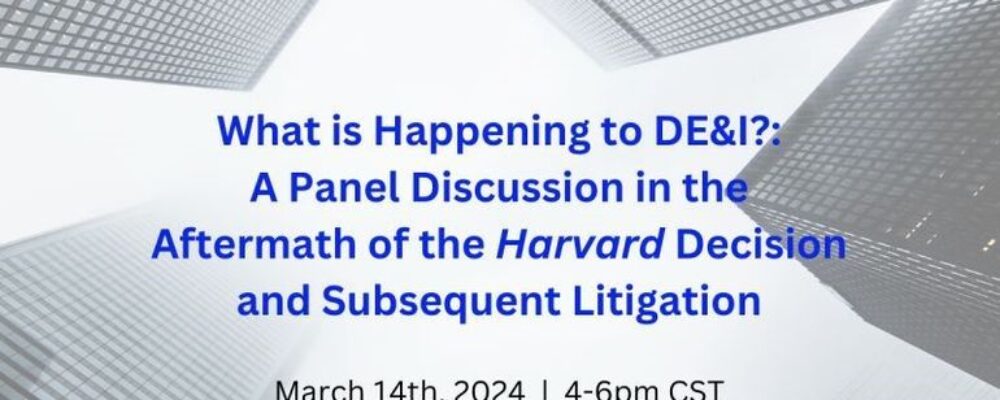As we discussed in our previous blog on non-competes (as well as other types of restraint of trade), the move to add regulation has been gaining momentum since Federal Treasurer Jim Chalmers announced in August 2023 a Competition Review to examine competition laws, policies and institutions.
Whilst the move to ban non-competes in Australia has been inspired by the U.S. Fair Trade Commission vote to ban non-competes, on 20 August 2024, a Federal District Court in Dallas, Texas, struck down the FTC rule, which will now not take effect on 4 September 2024. This decision will probably be subject to review by a Court of Appeal and then up to the United States Supreme Court. It would be ironic for Australia to end up with legal changes inspired by failed efforts elsewhere.
Since Treasury and the ANU proposed changes to the law on non-competes, multiple voices, ranging from government ministers, union officials, lawyers, and academics have been raised in support of this reform, their arguments essentially being employees are severely disadvantaged (or, conversely, the cards are stacked in favour of employers), non-compete provisions have become more widespread, and, economically, they stifle innovation and competition.
We beg to differ. In this article, extracted from the White Paper, Non-compete constraints in Australia: A case for reform (available upon request), we will examine why arguments about the proliferation of non-competes are overblown and why their benefits are being sidelined in this debate.
Digging into the numbers
We do not dispute the figure that one in five employees is subject to a restraint, with survey evidence supporting this proposition. But digging deeper into the evidence, it is unclear whether there has been a proliferation of non-competes to employees in low wage jobs or others who should not be covered (of which more later).
An ANU Crawford School of Government Paper (it was authored by former Fair Work Commission President Dr Iain Ross) and a Federal Government Issues Paper both drew upon data from the ABS and the e61 Institute to suggest that a large proportion of the workforce was subject to a post-employment restraint.
In 2023, an ABS survey reported that about 20.8 per cent of businesses in Australia used a non-compete clause for at least some of their workers. Of those businesses, it reported that 68.2 per cent used non-compete clauses for more than three-quarters of their workers.
Non-compete clauses were used in all industries across the economy, although they are particularly common in knowledge and relationship focussed services industries including finance, real estate, professional services, insurance and healthcare. These statistics are broadly consistent with the e61 Institute’s 2023 online survey of 3,000 respondents about the prevalence of non-competes.
But as the famous 19th American author Mark Twain wrote, “There are three kinds of lies: lies, damned lies, and statistics.” Because while the e61 Institute gives an insight into the numbers, it didn’t collect, and we do not have information, about whether workers observed the non-compete; whether it influenced their decision to seek a new job or not; nor about whether the non-competes were enforceable on their terms. The information cited concerned workers who did not switch jobs because of the ‘chilling effect’ of the non-compete is U.S.-sourced data.
Nevertheless, it is likely that some subset of workers subject to an invalid non-compete observed it because of the ‘chilling effect’ of prospective litigation or lack of resources to obtain advice. But what percentage of the 20 per cent of workers subject to a non-compete observed a restraint that would probably be invalid? We simply don’t know.
What we can estimate is that of the 20% covered by a non-compete, some will observe the obligation because it is reasonable and they acknowledge the situation.
A second subset will negotiate a compromise with their employer that works out for everyone.
A third subset will obey a non-compete to some extent (they often cascade) that is probably invalid because it is not clear whether it is reasonable, they can manage to observe at least some of it and they don’t want to get involved in a dispute.
A fourth subset of the headline 20% will obey some or all of a non-compete which is unreasonable. This fourth subset is the real – quite narrow – scope of the problem which reform proponents touch on. This has been represented as a major issue necessitating a regulatory overhaul based on unsound arguments about Courts ignoring employees interests and issuing injunctions against them just for the asking.
On the vexing issue of low income workers being subject to non-competes, if the data is accurate then this is a cause for concern. From our perspective, there may be merit to an appropriate regulatory response targeting a very specific and narrow problem.
No poaching provisions
Critics of non-competes also argue that the legitimate interests that can be protected by a court, including a stable and well-trained workforce, have expanded. This type of legitimate interest can support a time-bound “no-poaching” clause.
But it’s worth remembering that such clauses have existed at least since early 1990 and recognise the investment needed to achieve a stable, trained workforce as well as the confidential information and customer connections that former employees may hold. For example, in Dawnay, Day & Co Ltd v D’Alphenliv, a non-solicitation provision was held reasonable in the circumstances with the former employer’s need for protection. Such a clause cannot prevent employees from leaving an employer. Rather, it only prohibits a former employee from doing the poaching. Leaving of their own volition or because of information or solicitation from any other channel (including a recruiter) is not an issue.
So, what are the benefits of restraints? Restraint of trade principles have been developed over about 600 years of common (judge-made) law to strike a balance between:
- Businesses wanting to protect valuable business goodwill, confidential information, important customer connections or a stable, well-trained workforce.
- Employees’ need to work, earn, and have flexibility to move jobs.
- The public interest in ensuring competition, free markets and reasonable employer protections.
Importantly, no one set of interests is paramount – all must be considered and balanced in determining whether a restraint is justified by the special circumstances of the case such that it will be valid and enforceable.
We contend that the benefits include incentives for employers to confidently invest in research and development, and staff training, combating the fear that these investments can be quickly lost.
A reasonable non-compete restraint preventing an employee from taking up employment with a rival for a defined and usually short period of time, scope and within a defined geography may be the only feasible way of protecting employer trade secrets or confidential information.
We believe this is particularly relevant considering it can be difficult to define what is confidential information for the purposes of the restraint; a lesser type of restraint may be ineffective given the difficulty of proving solicitation; and the obligations of the employee are made clear in a way that is more forceful than if the matter is left to implication of contractual terms.
In addition, non-compete clauses can provide broader protection than an employer will have under the implied duty of confidentiality, the equitable duty of confidence or even an express confidentiality clause, and a non-compete removes the temptation for a former employee to offer, and for a new employer to solicit, confidential information, as found in Woolworths v Olsen in 2004.
Without a covenant (whether a non-compete or a lesser restraint such as a non-solicitation clause), employees cannot be stopped from canvassing customers after the employment has ceased.
Finally, a reasonable non-poaching or non-recruitment clause can protect an employer’s interests by retaining employees critical to the continued success of the business, employees with access to confidential information, or where employees have significant client connection built up during employment.
We contend these are all valid arguments that, at the very least, deserve to be fully aired while any changes are being considered. To date, it’s the proponents of change that have received all the airplay. This White Paper, we hope, will bring some balance to the debate.
For a copy of the White Paper, Non-compete constraints in Australia: A case for reform, please click here.
Subscribe to receive the next Workplace Law & Strategy blog direct to your inbox.
“With approximately 900 lawyers across 17 offices, Seyfarth Shaw LLP provides advisory, litigation, and transactional legal services to clients worldwide.”
Please visit the firm link to site





